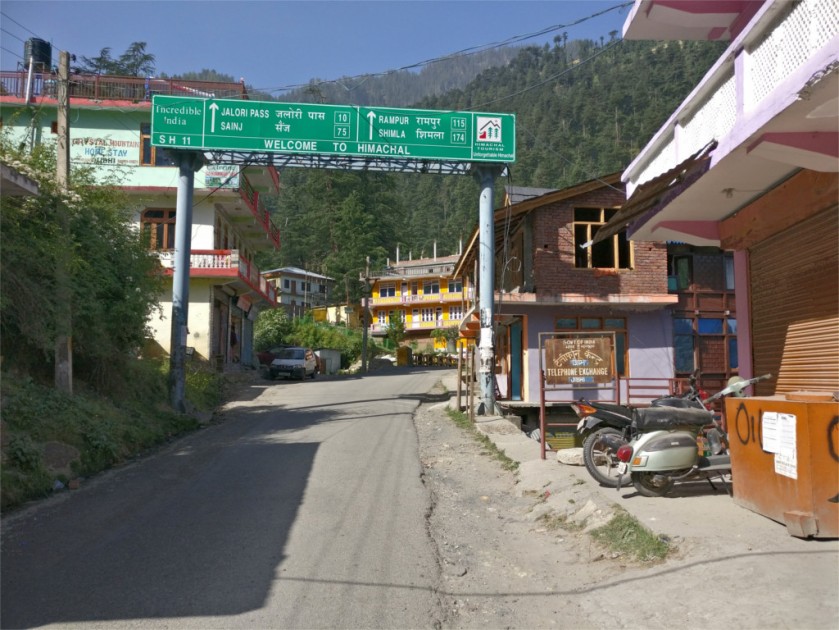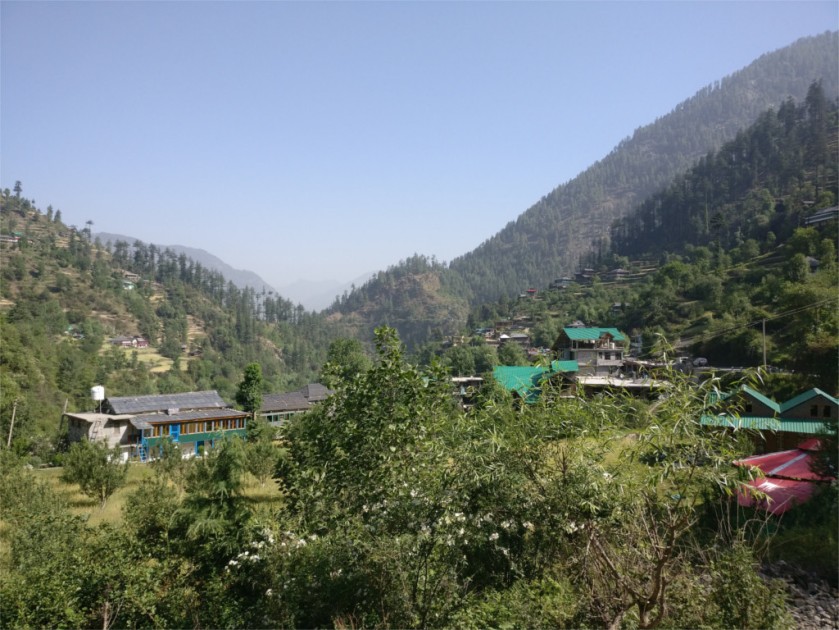We hear the word village and we think of fields and farming. We’re never wrong about this today, although the first villages are found from about 3000 years before agriculture developed. Over millennia, the development of agriculture has completely wiped out the hunter-gatherer economy that birthed villages. Turtuk was surrounded with terraced fields, largely given over to wheat, but with patches full of a variety of vegetables.


Between houses there were numerous apricot and cherry trees. Both of these fruits were different from the variety we’d eaten before. The apricots were small, perhaps 2 or 3 centimeters across, and terribly sweet. The cherries were also tiny, about 5 millimeters across, and tasted tartly sweet. We’d been seeing the dwarf apricots ever since we arrived in Ladakh, but the cherries were new to us. Hunder, the village with our hotel, was at an altitude of 3000 meters. From there we’d driven downstream of Shyok for about three hours, and then climbed about 200 meters to Turtuk. That put us at an altitude which was about the same as Hunder. At these heights perhaps these dwarf varieties of fruits grow best.




The wheat was ripening in the fields. Lower down I’d seen the harvest in progress. But here it looked liked the growing season would last another 10 days or a week. Every isolated small patch of ground was used to grow something: vegetables. This was early enough in the season that I saw many vegetable flowers: potatoes (the featured photo), tomatoes (the Solanum flower in the gallery above), a cucumber with its edible yellow flowers, peas (perhaps, I don’t know its flowers), and others that you don’t see here, like carrots, radish, runners of beans and edible leaves, and the third edible Solanum, namely brinjal. In trips to jungles I equate Solanum with poisonous weeds. Seeing these three varieties of Solanum flowers in tended fields reminded me of the European reluctance to eat tomatoes and potatoes when they were first imported from the Americas. Quite an understandable caution, I thought.
The ethnic Ladakhis seem to follow Buddhism and Islam in about equal numbers. The Buddhist population largely lives in the eastern, higher, parts of Ladakh, and the muslims in the western, lower regions. I’d said earlier that geographically Ladakh is where the roof of the world slopes down to meet central Asia. This is not only a metaphor. Along this slope Buddhism and, later, Islam traveled eastwards, following the silk route. From the higher parts of the village I could spot the small dome of the village mosque, but I didn’t pass it. It seems to stand towards one edge of the village. Religion has its normal place in Ladakh, present in the family, but secondary to work and livelihood in the larger community.
No description of mountain villages can be complete without its beasts of burden. No car or motorcycle can negotiate the lanes of this village. I saw no bicycles either. But I passed a corral which held a donkey munching on its fodder. It raised its head and posed for me, but brayed at me when I walked away. Perhaps it expected me to feed it. I was on my way to a surprisingly good lunch, and didn’t have time to spend on a donkey.















